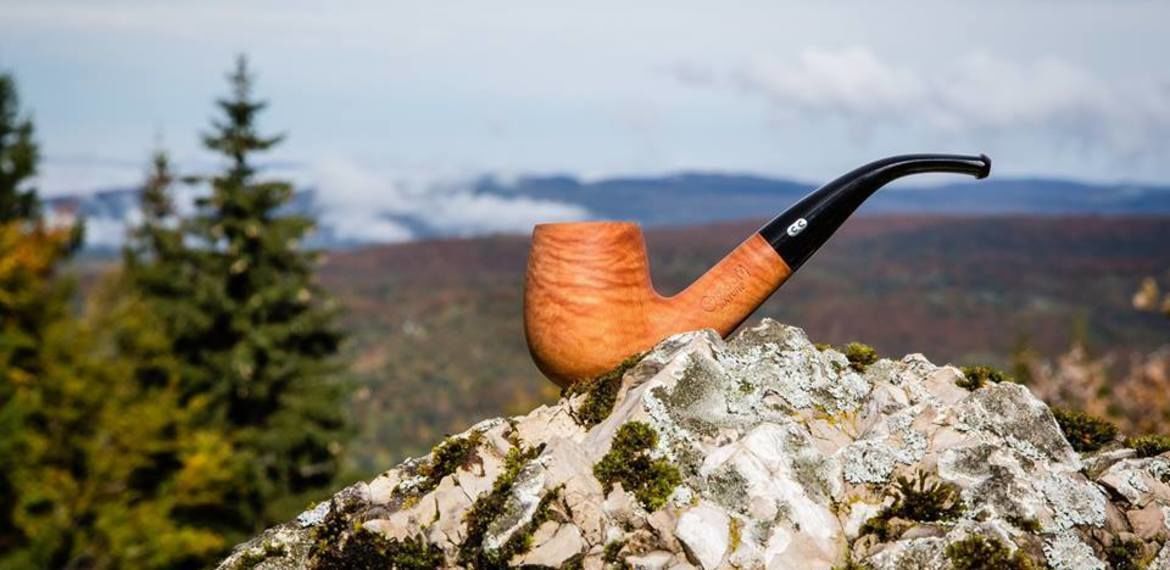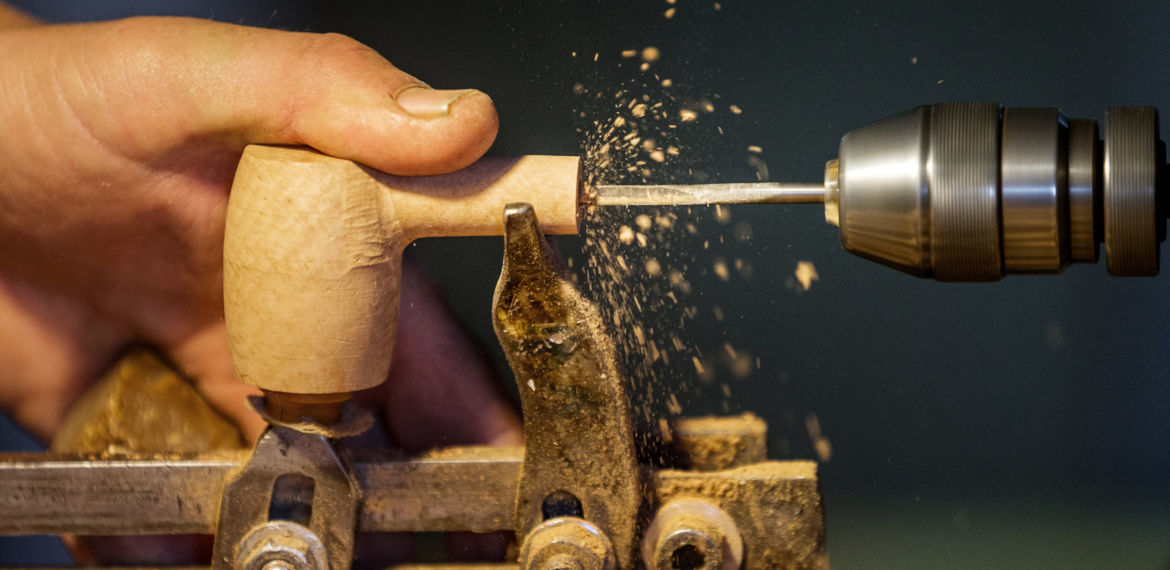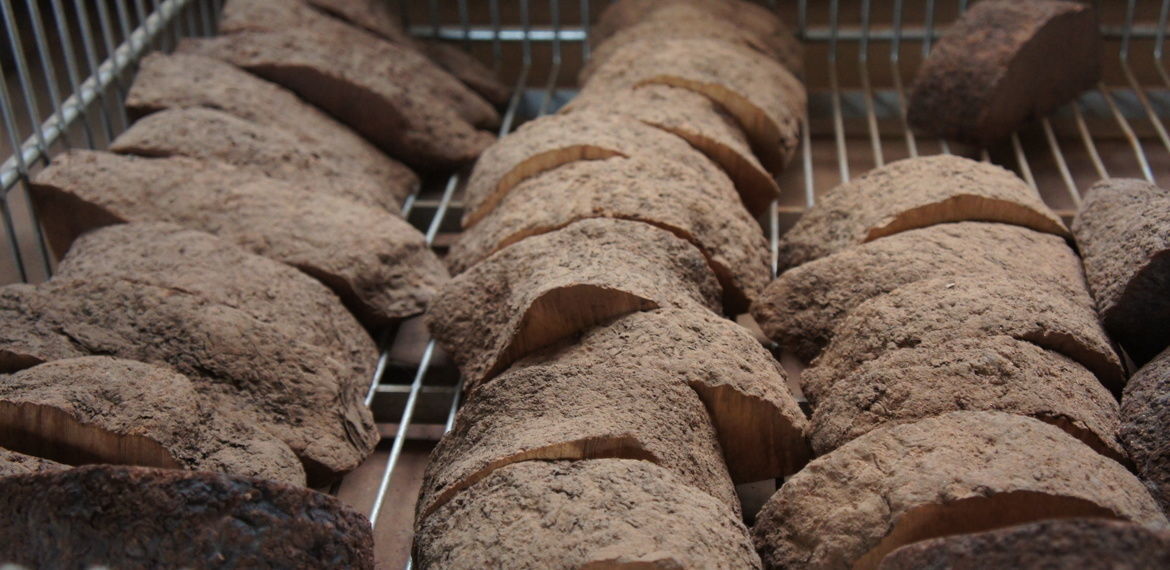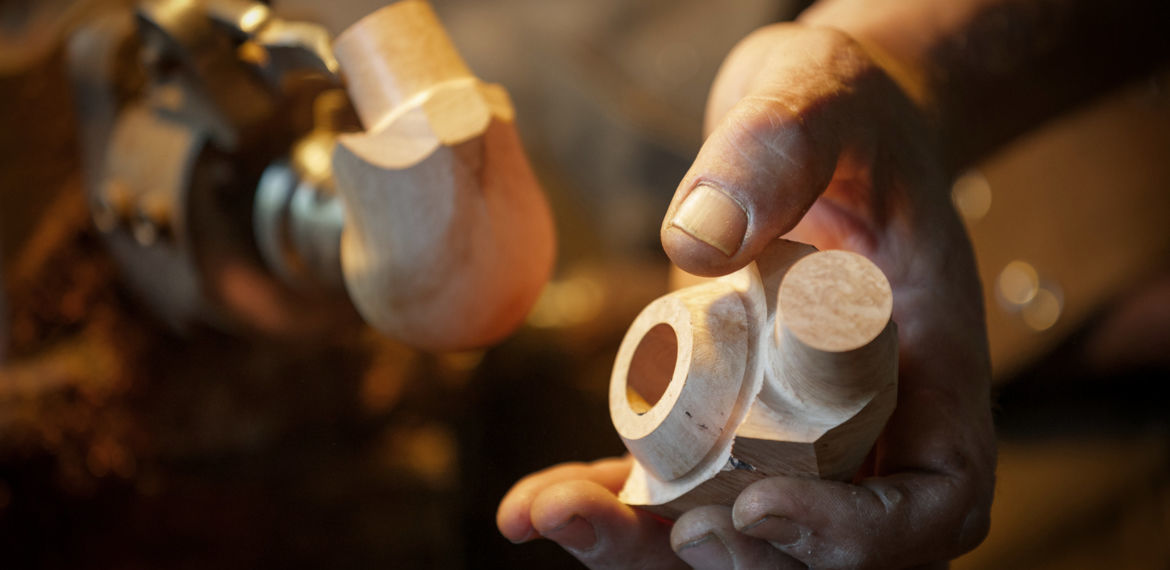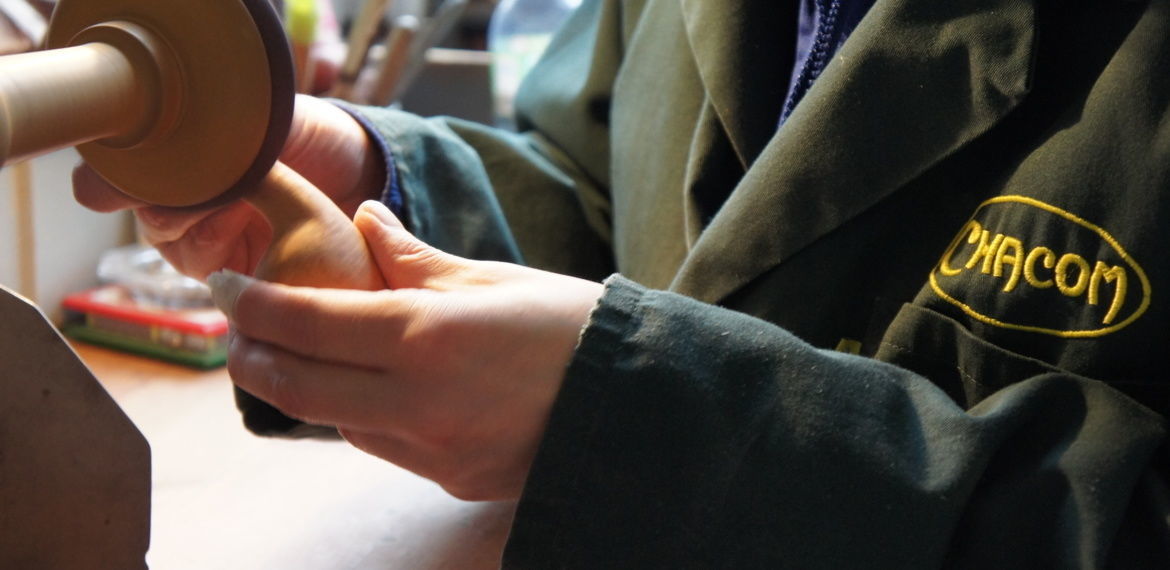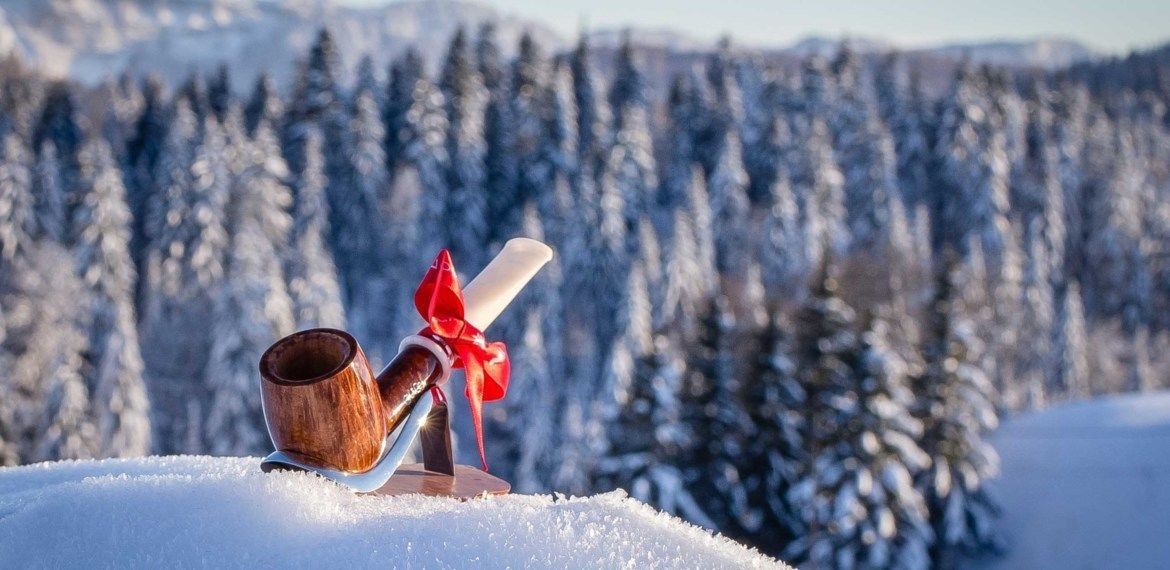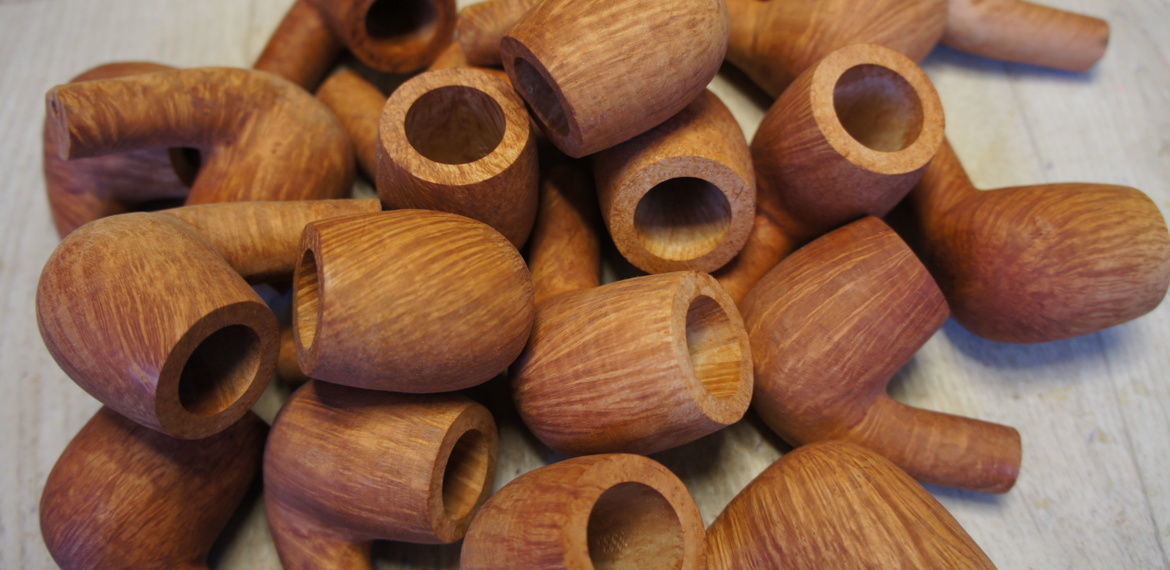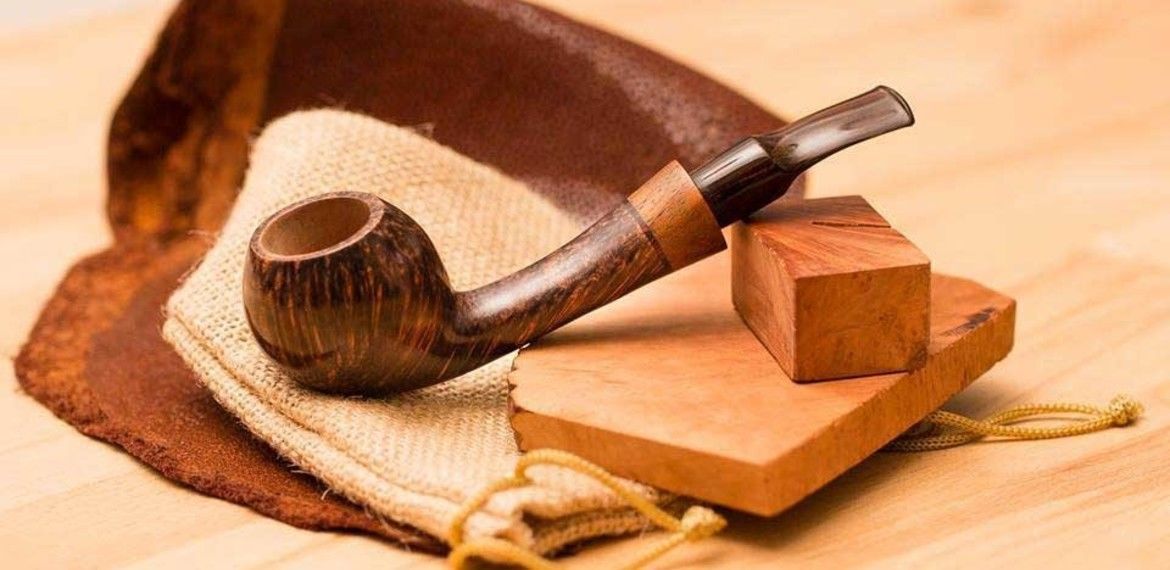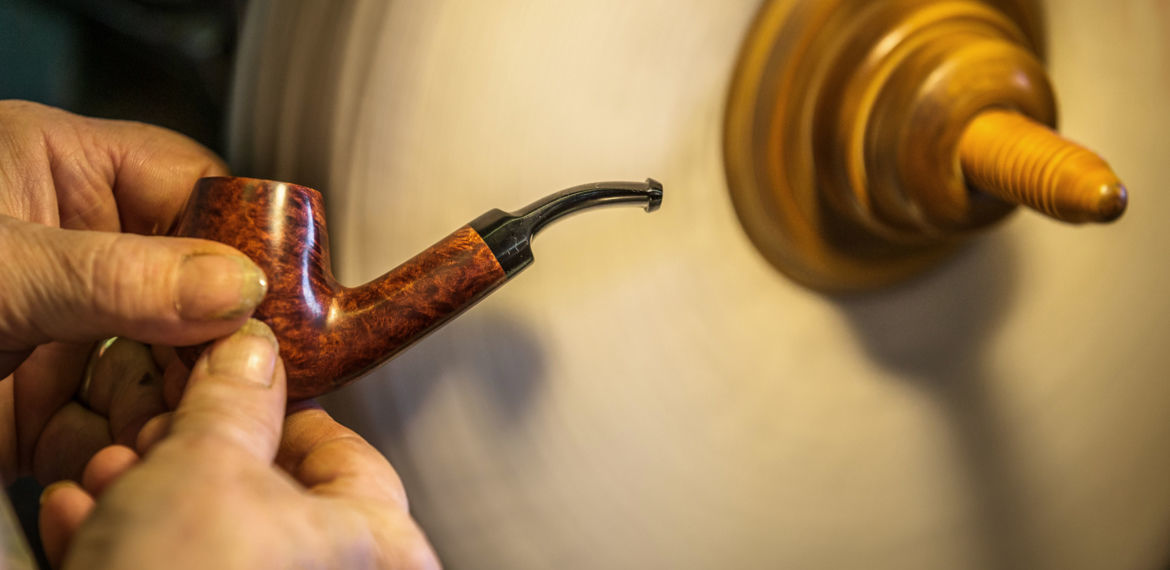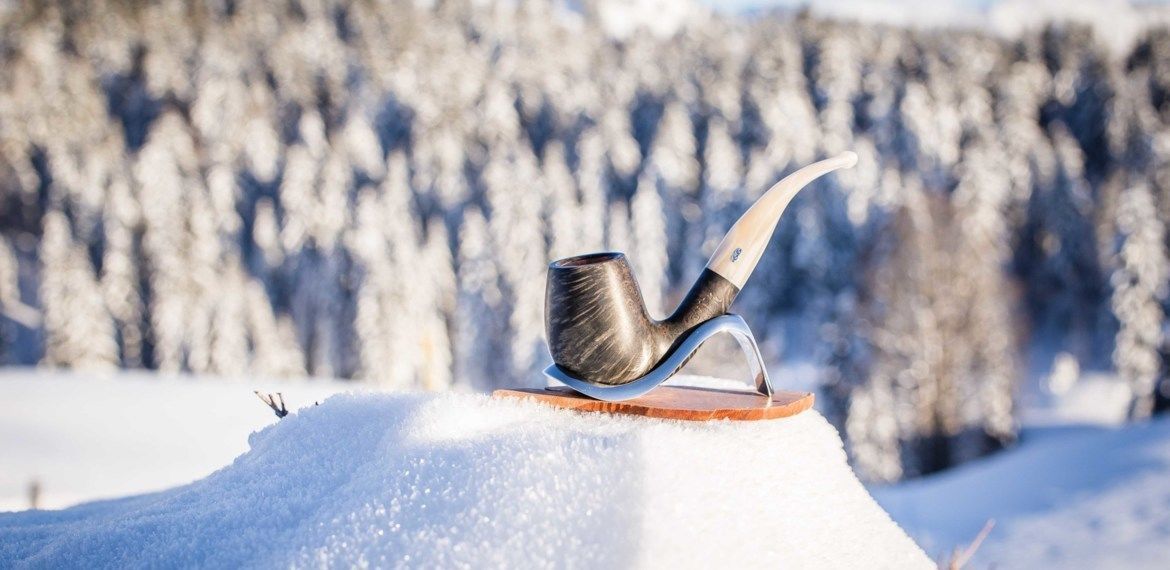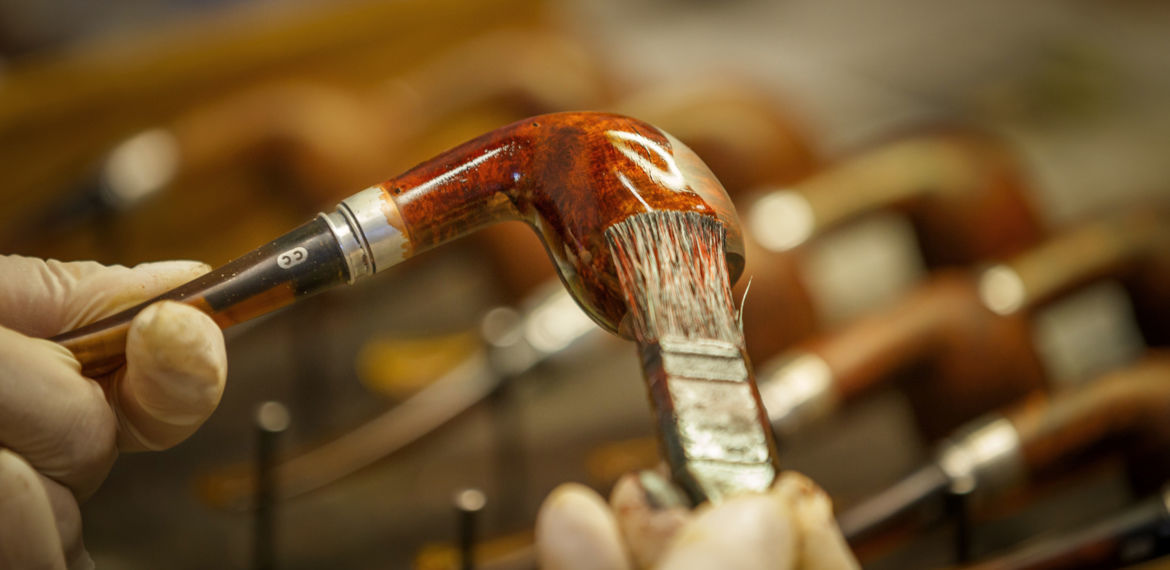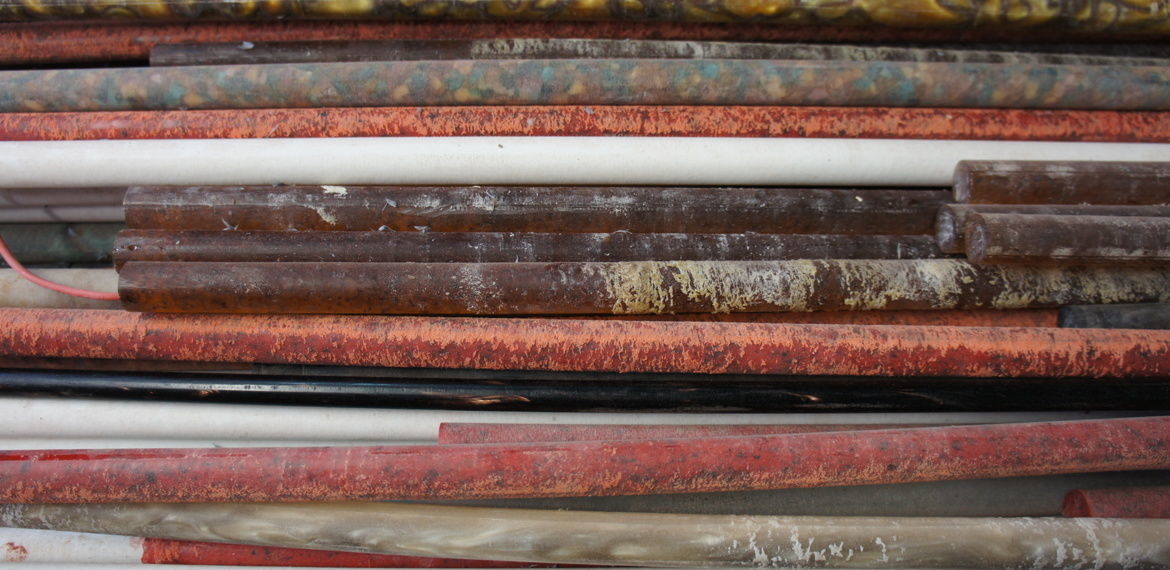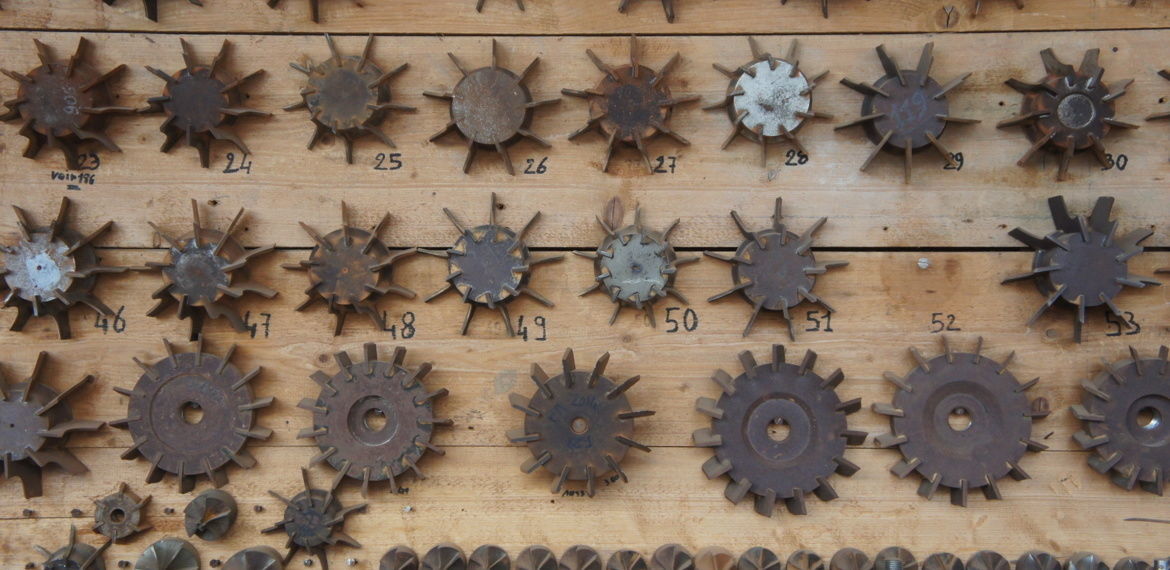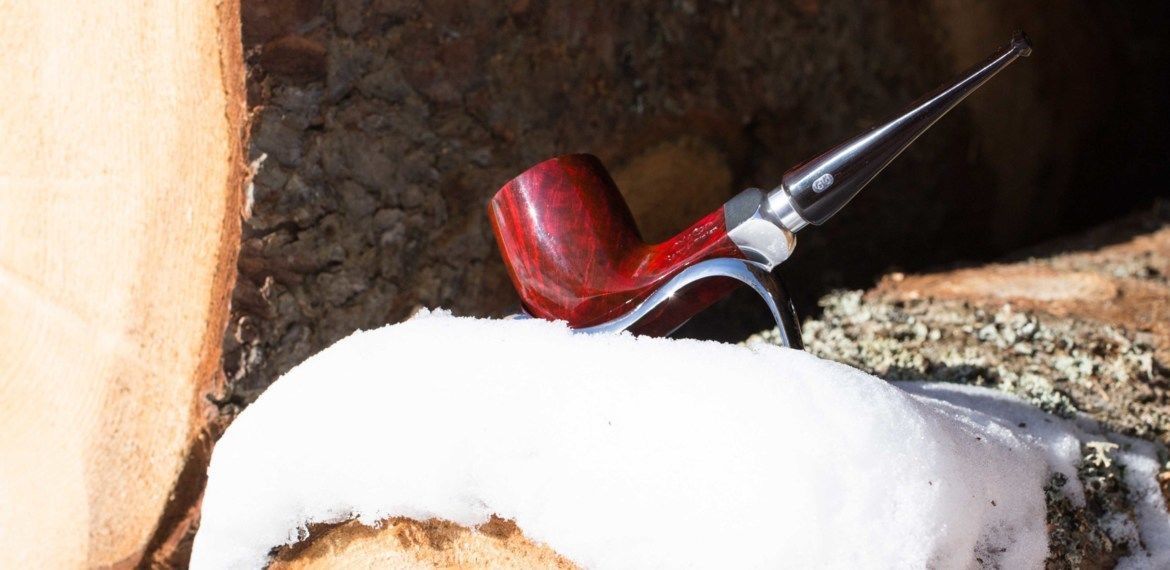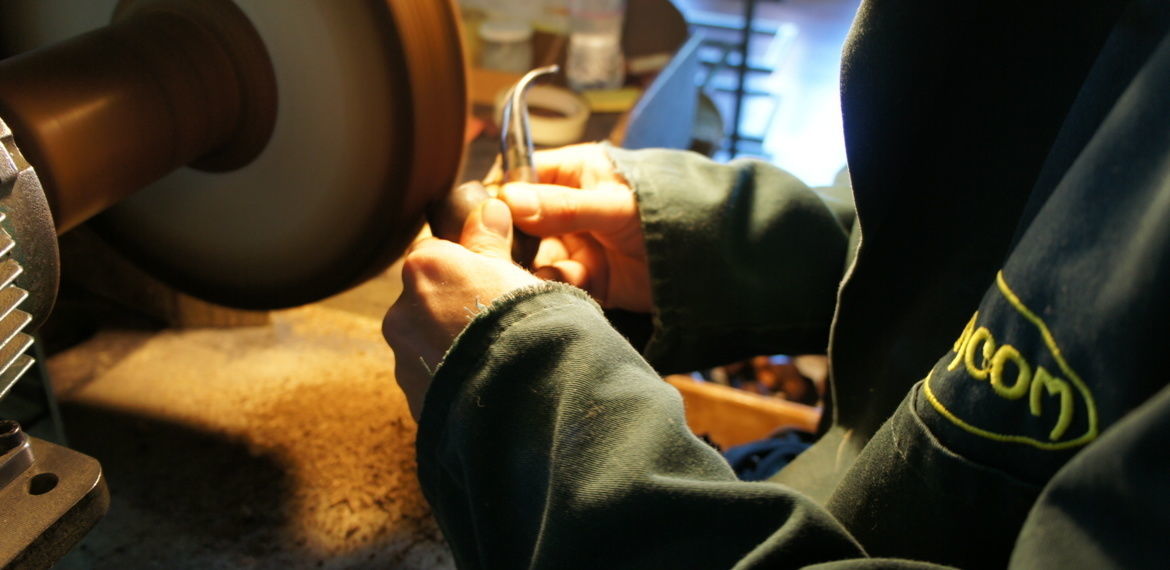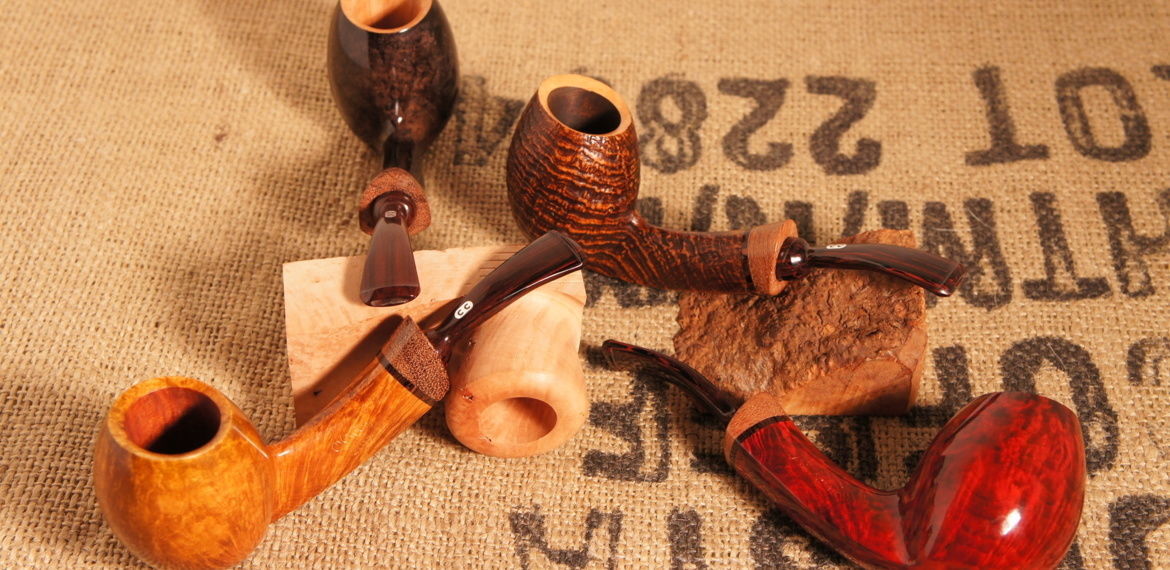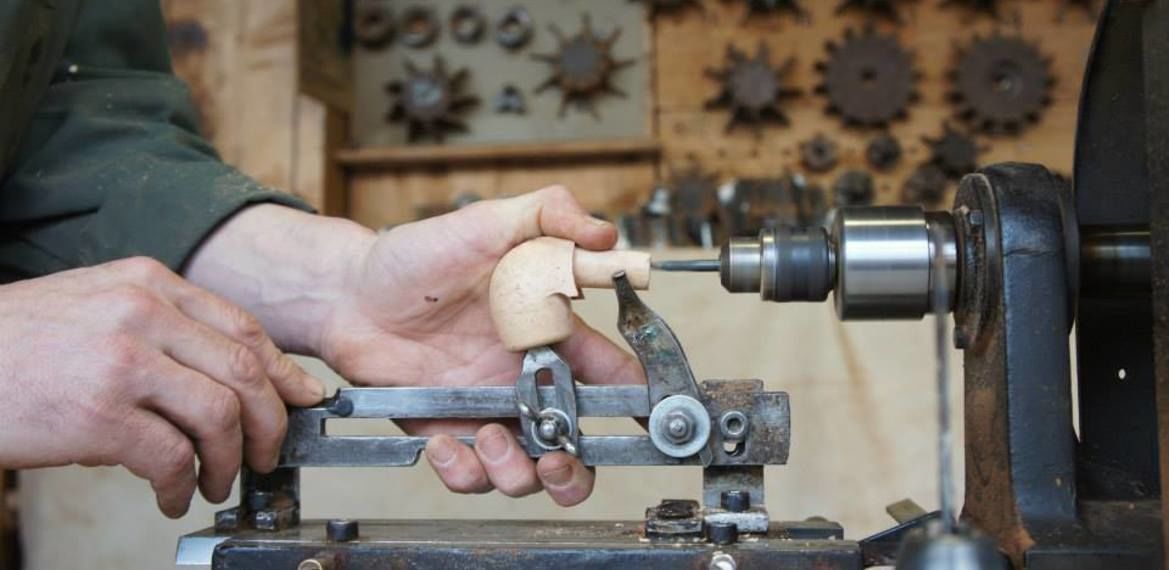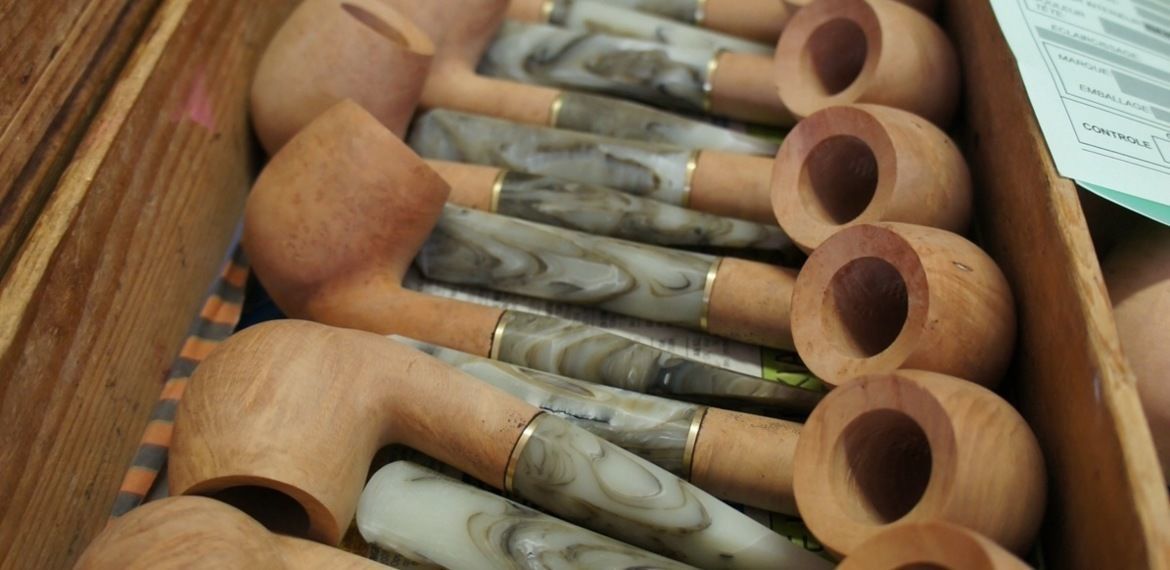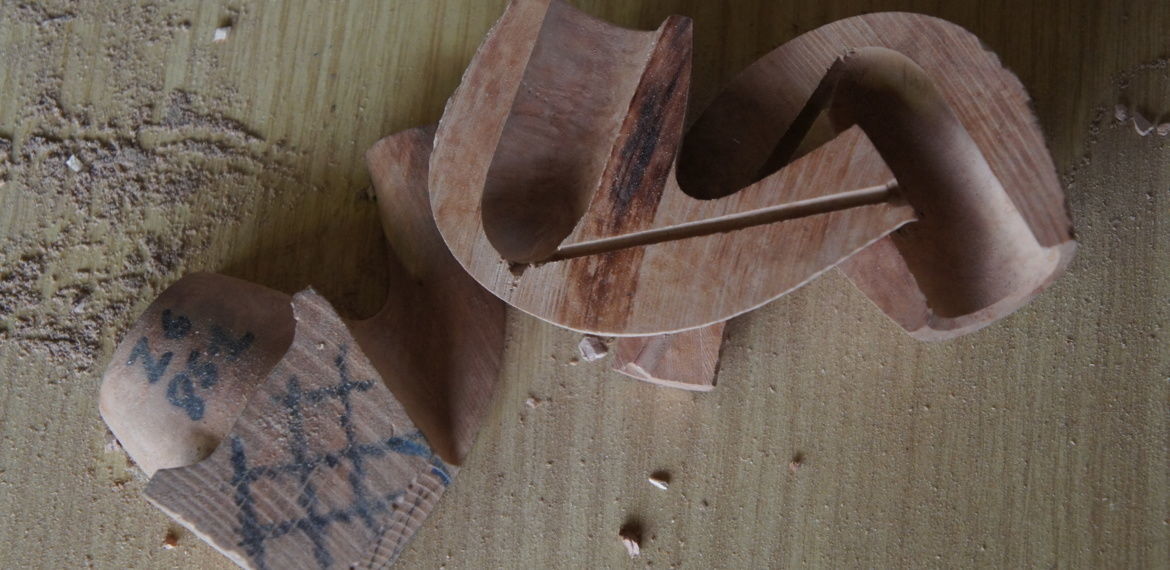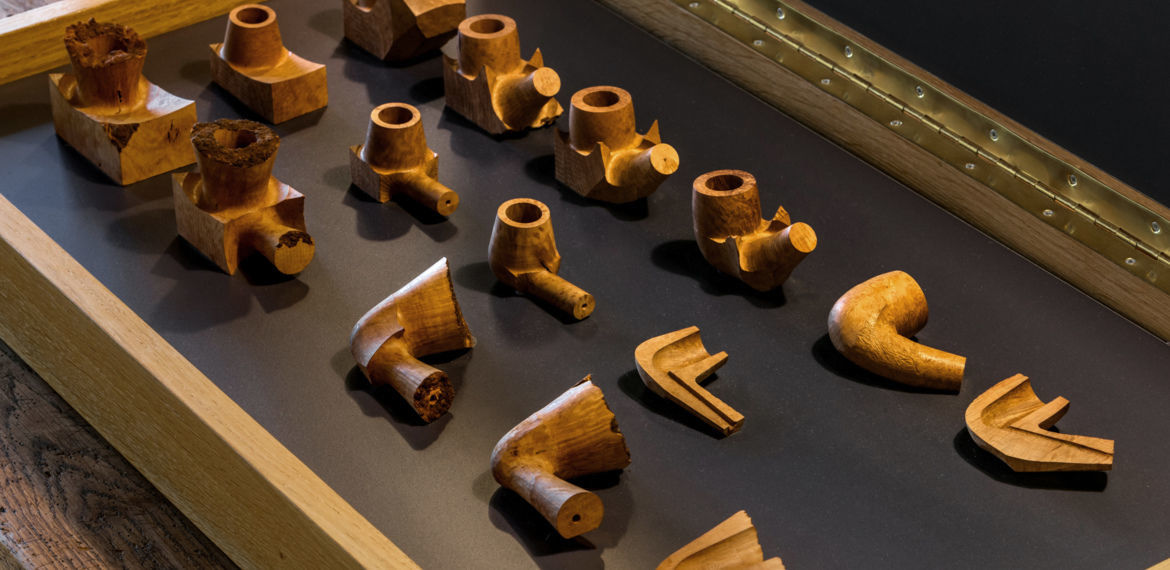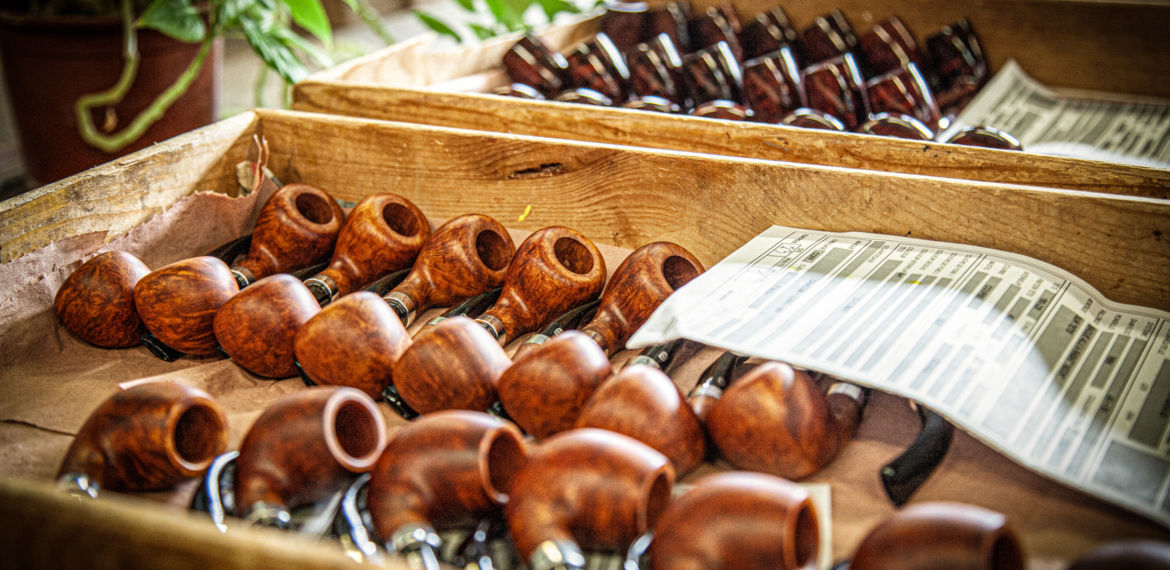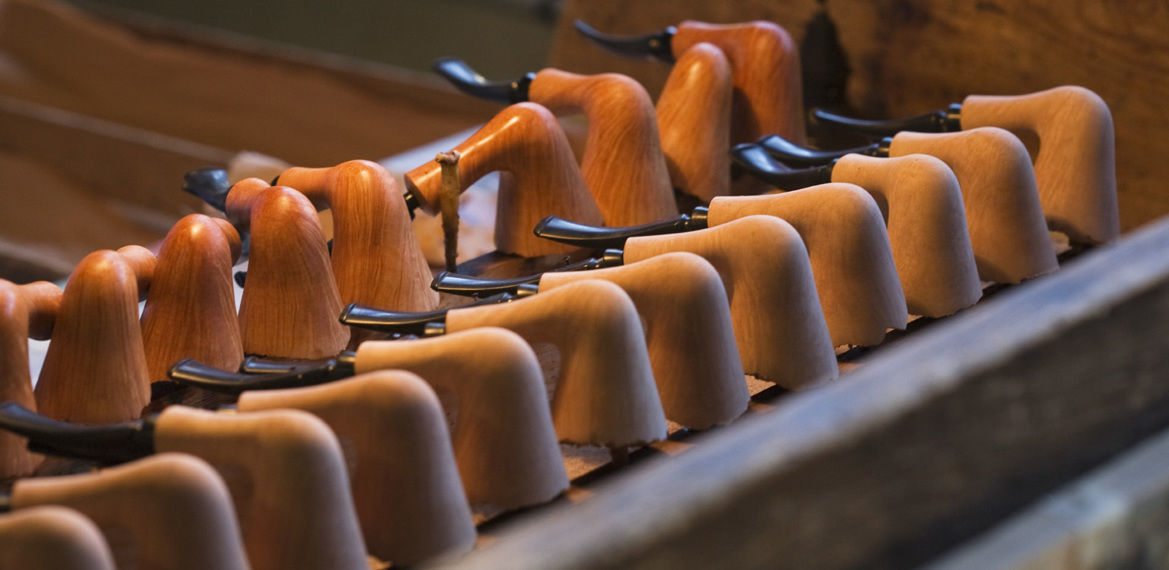Briar Pipe Making
MAINTAINING THE TRADITION
We select our briarwood among the most beautiful roots of the Mediterranean basin. From these roots, the briar blocks (ebauchons and plateau blocks) are cut and boiled. This preparation plays a big role for the taste of the future pipes. Once sorted, the briar blocks dry naturally for 1 year on racks and are regularly returned in our dryer, one of the last in the world. After calibration, the different stages of the production are carried out by our master pipers.

CALIBRATION
With a circular saw, the pipemaker cut the briar blocks so they have a thickness and height corresponding to the pipe we want to create.

ROUGH HEWING
The briar blocks are turned so the chamber and the upper part of the bowl can be designed.

SHANK SHAPING
The objective of this step is to shape the shank of the pipe, when this is done, the briar block become a rough shaped pipe.
MILLING
By milling the pipe, the pipemaker remove the surplus of briar located between the bowl and the shank.
RASPING
The miller can't remove the briar on the lower part of the bowl. So, the objective of the the rasping step is to remove it with another machine.
DRILLING
This step is difficult and require precision. Indeed, the bit has to drill straight and finish perfectly in the bottom and the center of the chamber.
SELECTION
The sorter check and grade all the pipe head. There are 9 different categories of quality which impact the price and the finish of the pipe. A sorter finds only one or two perfect pipes in his life.
ASSEMBLY
This is during this step that the pipemaker assembles the stem with the head. Both part have to perfectly fit together.
POLISHING
Polishing is the most difficult but also the most important step in the pipemaking process. It consists in placing the pipe under turning abrasive disks to give it its final shape.

STAINING
During this step, thanks to a paintbrush or a stamp, the pipemaker adds color to the pipes. After that, the pipes is slightly burned to fix the stain on the briar.
ENLIGHTENMENT
After the drying, the pipemaker lightens the pipe with cretonne rolls to obtain a consistent colour on the whole pipe. It also give to the pipe its final color.

MARKING
Finally, the marking step. It is the affixing of the manufacturer's mark, the name of the serie and the model reference. After a final check and a light polishing, the pipes are finally boxed and shipped all over the world.
In 2013, CHAPUIS-COMOY & Cie obtain the Entreprise du Patrimoine Vivant (EPV) label is a mark of recognition of the French State, put in place to reward French firms for the excellence of their traditional and industrial know-how.
- NEWS
- ABOUT US
- Who we are
- Factory Store
- Production
- History
- ADVICES & SERVICES
- Smoker advice
- After sales service
- Contact us

